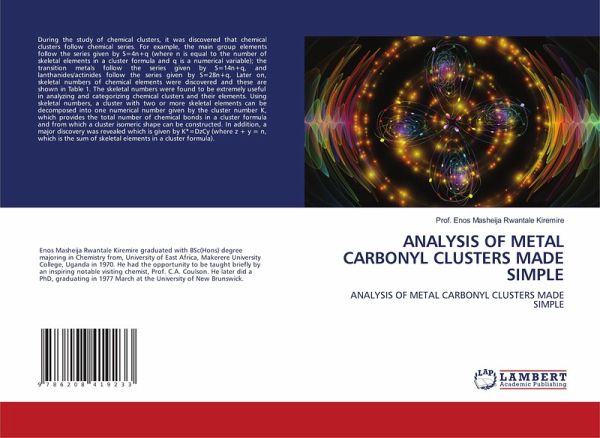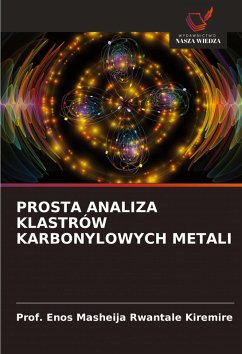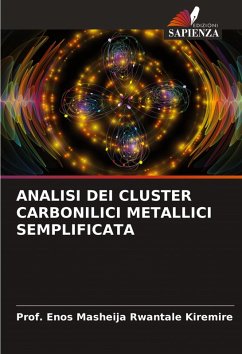
ANALYSIS OF METAL CARBONYL CLUSTERS MADE SIMPLE
Versandkostenfrei!
Versandfertig in 6-10 Tagen
29,99 €
inkl. MwSt.

PAYBACK Punkte
15 °P sammeln!
During the study of chemical clusters, it was discovered that chemical clusters follow chemical series. For example, the main group elements follow the series given by S=4n+q (where n is equal to the number of skeletal elements in a cluster formula and q is a numerical variable); the transition metals follow the series given by S=14n+q, and lanthanides/actinides follow the series given by S=28n+q. Later on, skeletal numbers of chemical elements were discovered and these are shown in Table 1. The skeletal numbers were found to be extremely useful in analyzing and categorizing chemical clusters ...
During the study of chemical clusters, it was discovered that chemical clusters follow chemical series. For example, the main group elements follow the series given by S=4n+q (where n is equal to the number of skeletal elements in a cluster formula and q is a numerical variable); the transition metals follow the series given by S=14n+q, and lanthanides/actinides follow the series given by S=28n+q. Later on, skeletal numbers of chemical elements were discovered and these are shown in Table 1. The skeletal numbers were found to be extremely useful in analyzing and categorizing chemical clusters and their elements. Using skeletal numbers, a cluster with two or more skeletal elements can be decomposed into one numerical number given by the cluster number K, which provides the total number of chemical bonds in a cluster formula and from which a cluster isomeric shape can be constructed. In addition, a major discovery was revealed which is given by K_=DzCy (where z + y = n, which is the sum of skeletal elements in a cluster formula).














